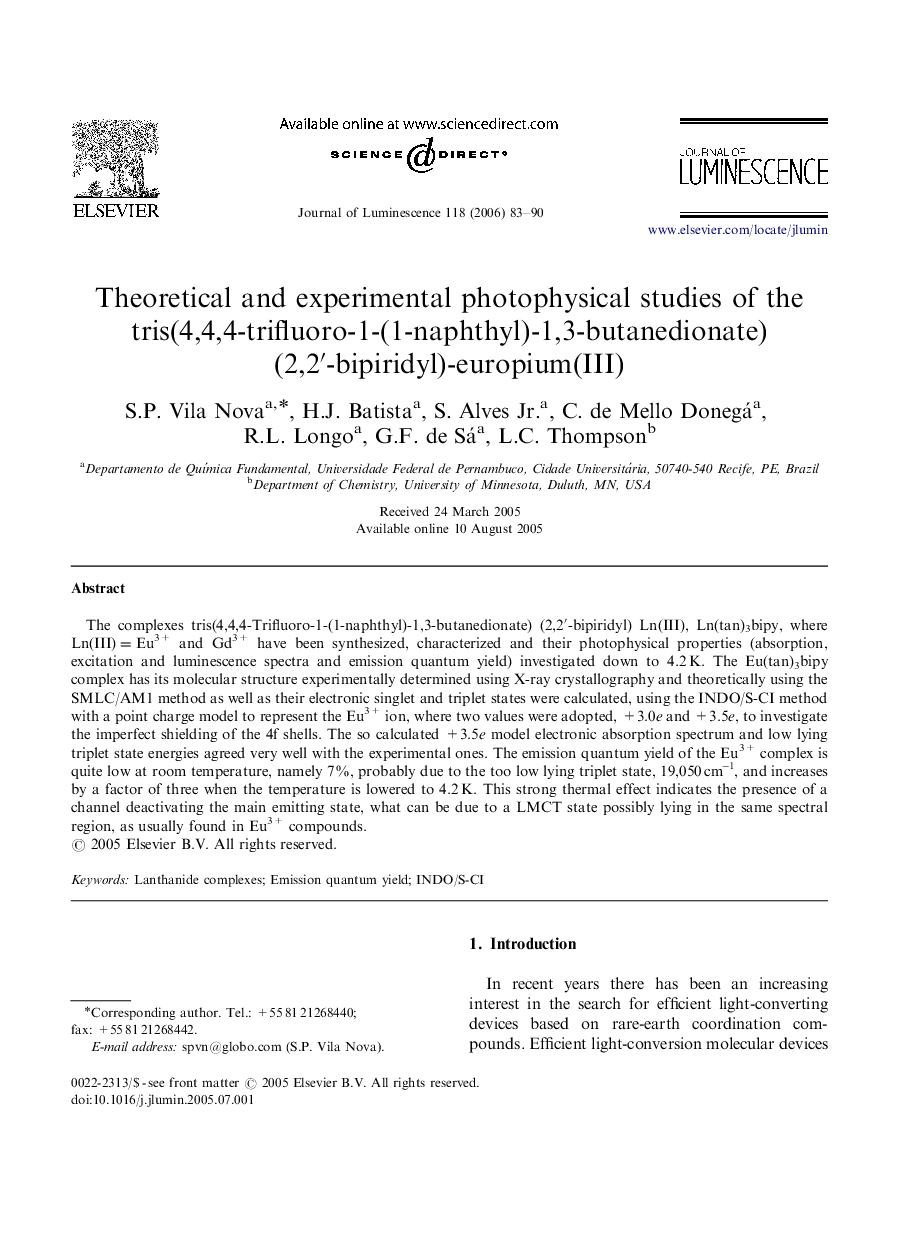| Article ID | Journal | Published Year | Pages | File Type |
|---|---|---|---|---|
| 5404357 | Journal of Luminescence | 2006 | 8 Pages |
Abstract
The complexes tris(4,4,4-Trifluoro-1-(1-naphthyl)-1,3-butanedionate) (2,2â²-bipiridyl) Ln(III), Ln(tan)3bipy, where Ln(III)=Eu3+ and Gd3+ have been synthesized, characterized and their photophysical properties (absorption, excitation and luminescence spectra and emission quantum yield) investigated down to 4.2Â K. The Eu(tan)3bipy complex has its molecular structure experimentally determined using X-ray crystallography and theoretically using the SMLC/AM1 method as well as their electronic singlet and triplet states were calculated, using the INDO/S-CI method with a point charge model to represent the Eu3+ ion, where two values were adopted, +3.0e and +3.5e, to investigate the imperfect shielding of the 4f shells. The so calculated +3.5e model electronic absorption spectrum and low lying triplet state energies agreed very well with the experimental ones. The emission quantum yield of the Eu3+ complex is quite low at room temperature, namely 7%, probably due to the too low lying triplet state, 19,050Â cm-1, and increases by a factor of three when the temperature is lowered to 4.2Â K. This strong thermal effect indicates the presence of a channel deactivating the main emitting state, what can be due to a LMCT state possibly lying in the same spectral region, as usually found in Eu3+ compounds.
Related Topics
Physical Sciences and Engineering
Chemistry
Physical and Theoretical Chemistry
Authors
S.P. Vila Nova, H.J. Batista, S. Jr., C. de Mello Donegá, R.L. Longo, G.F. de Sá, L.C. Thompson,
